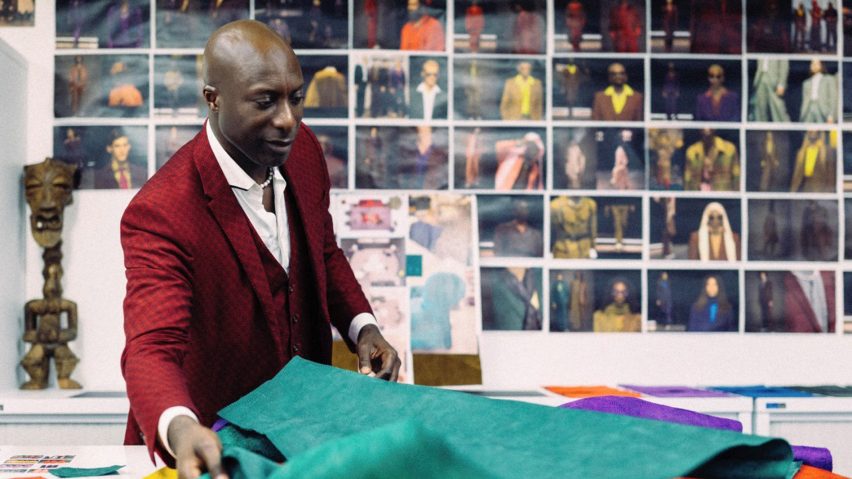
"Tradition has to evolve or it dies" says Ozwald Boateng
British fashion designer Ozwald Boateng says there is "definitely an opportunity" to disrupt the furniture industry in the same way he shook up the tailoring traditions of London's Savile Row in this interview.
Boateng has worked with Italian brand Poltrona Frau on his first-ever furniture collection, which includes a rework of the traditional Chesterfield sofa.
The London-based designer told Dezeen there was "a lot of space" for a more diverse cultural aesthetic in the market.
"There is a creative language that needs to express more in this space," Boateng said.
"I have a cultural aesthetic, in terms of my African roots, from being born in the UK and from my experience on Savile Row," he added. "There is definitely an opportunity to express this aesthetic in furniture."
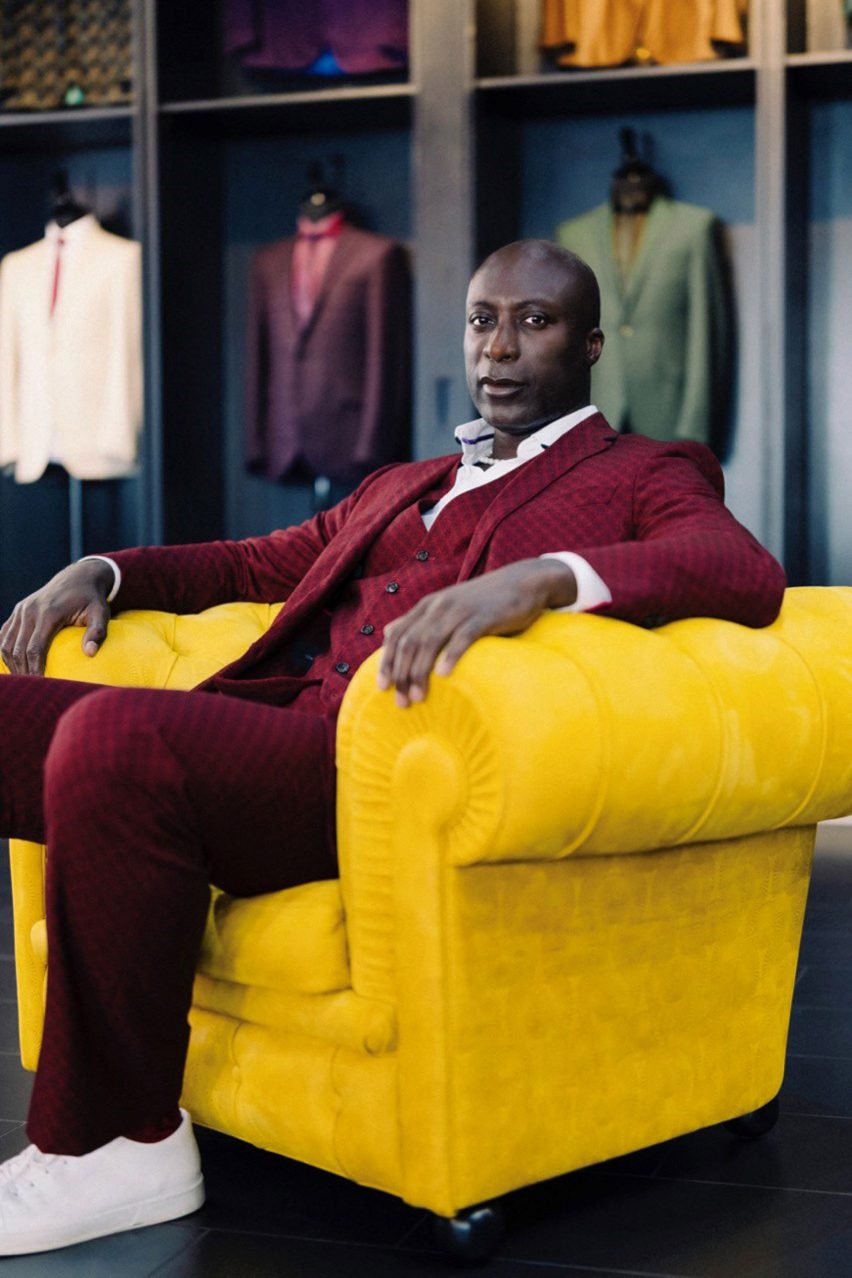
Boateng was born in 1967 to parents who immigrated from Ghana in the 1950s.
He made history in 1995 when, at the age of 28, he became the youngest and first Black tailor to open a store on Savile Row, the heartland of bespoke suit-making.
The designer quickly earned renown for his fresh take on classic menswear silhouettes, which attracted a much younger and more diverse demographic to Mayfair.
"Starting on a traditional base is always the key for me," Boateng said.
"It's about taking something traditional and finding a modern language in which to express it."
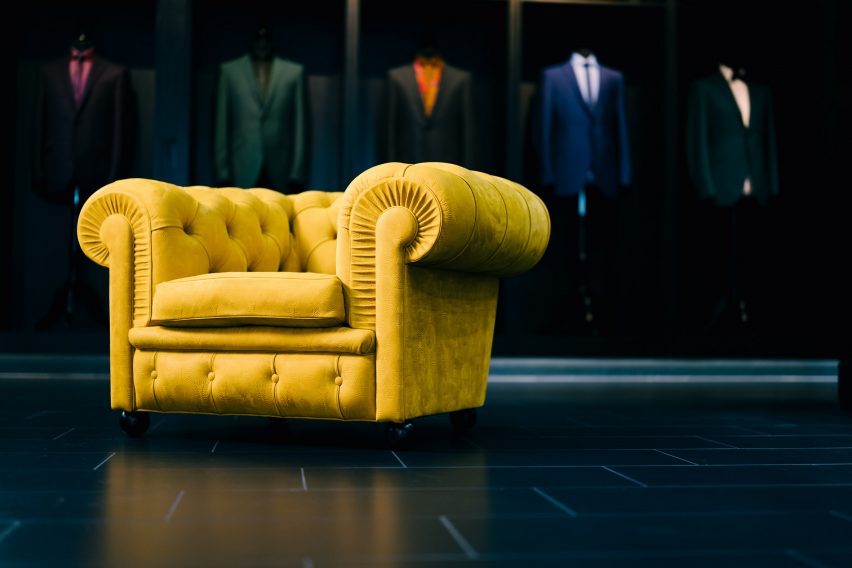
When Poltrona Frau invited Boateng to collaborate, he saw it as an opportunity to demonstrate how the same thinking could be applied to furniture, he recalled.
The Chesterfield is one of the most iconic British furniture designs of all time, with almost as much history as the three-piece suit.
Characterised by quilted leather upholstery and a low back, this couch was first developed in the mid-1700s for Lord Philip Stanhope, the fourth Earl of Chesterfield, to seat gentlemen guests without creasing their suits.
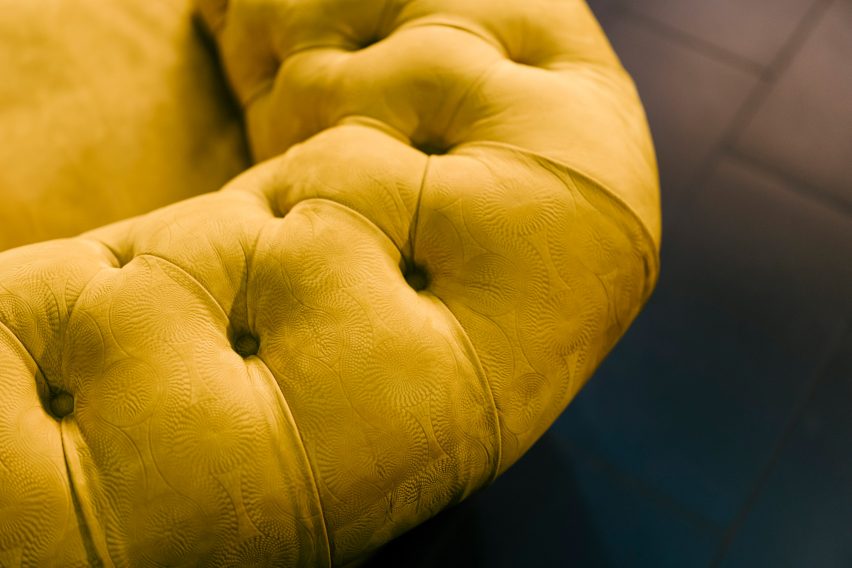
Poltrona Frau has produced its own version, Chester, ever since the company was established in 1912.
"I have been sitting on a version of this chair for as long as I can remember; it represents so much historically," said Boateng.
"I knew that if I could find a modern way to interpret it, it would be a win."
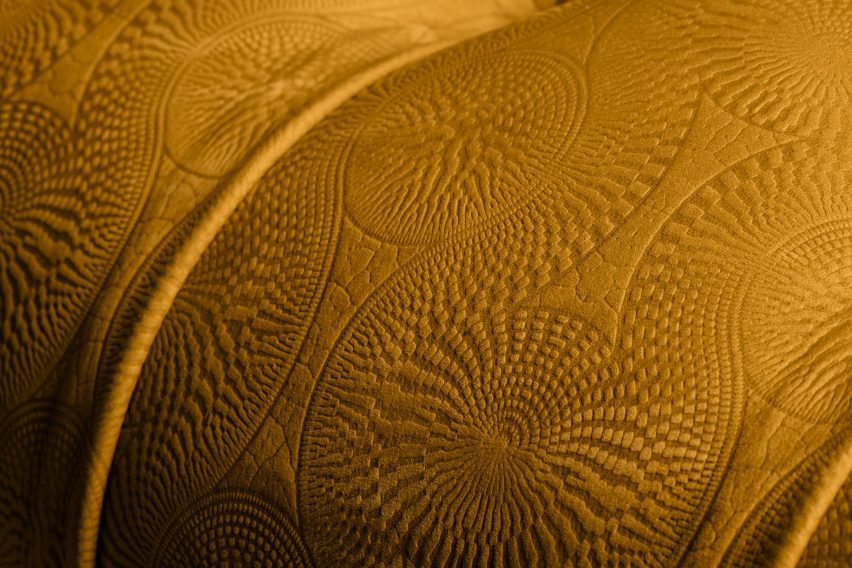
Boateng unveiled new versions of the Chester sofa, armchair, daybed and ottoman as part of a capsule collection presented during London Design Festival.
The designs are upholstered in a unique embossed leather that incorporates a highly intricate pattern.
It took Poltrona Frau's team six months to develop a hot embossing technique to produce this effect.
The process has to be carried out manually, using a press that sandwiches the leather between a smooth metal surface and a bakelite plate.
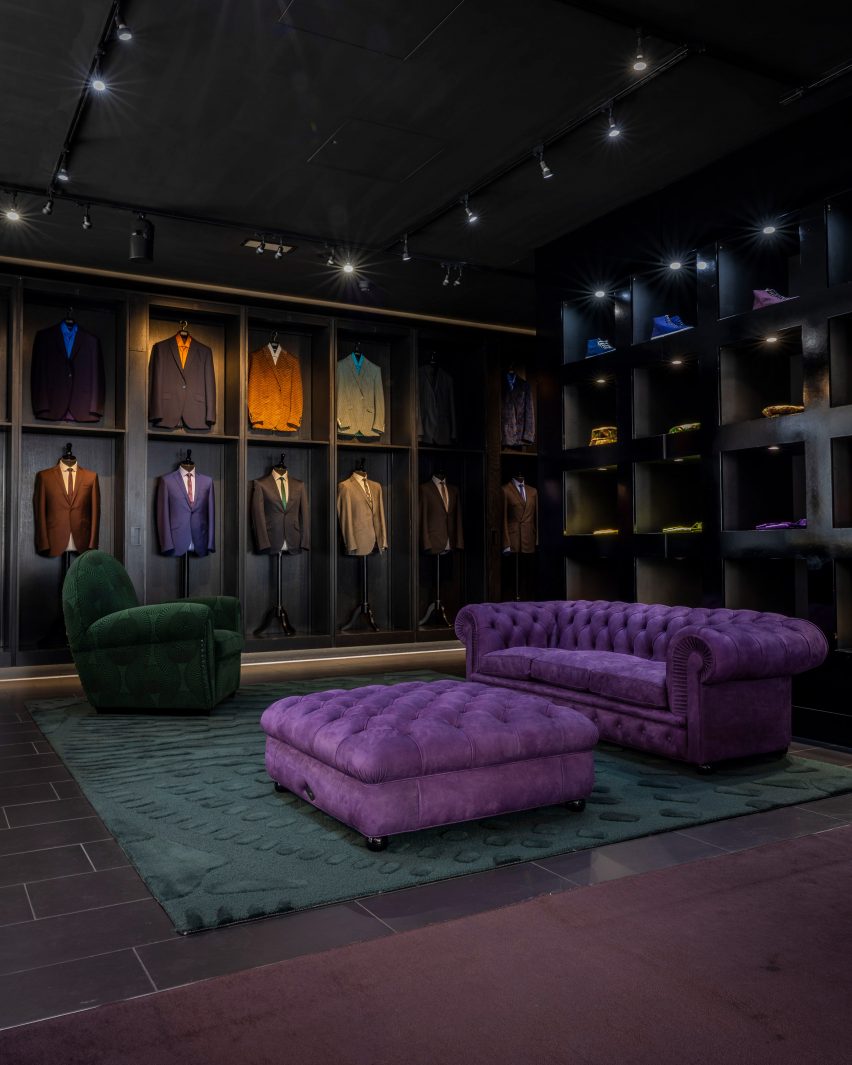
Boateng believes this level of innovation is essential to ensuring that designs like the Chesterfield stay relevant, but claims it is often lacking in the British manufacturing industry.
"I have always said that tradition has to evolve or it dies," he said.
"In the UK, we only produce a fraction of what we did when I was first starting out. That has a lot to do with not evolving skillsets. If you're not willing to change, it doesn't work."
Boateng said the key to evolving traditions is "understanding the rules, so you can understand how to bend them".
"It's about adding friction into the process," he said.
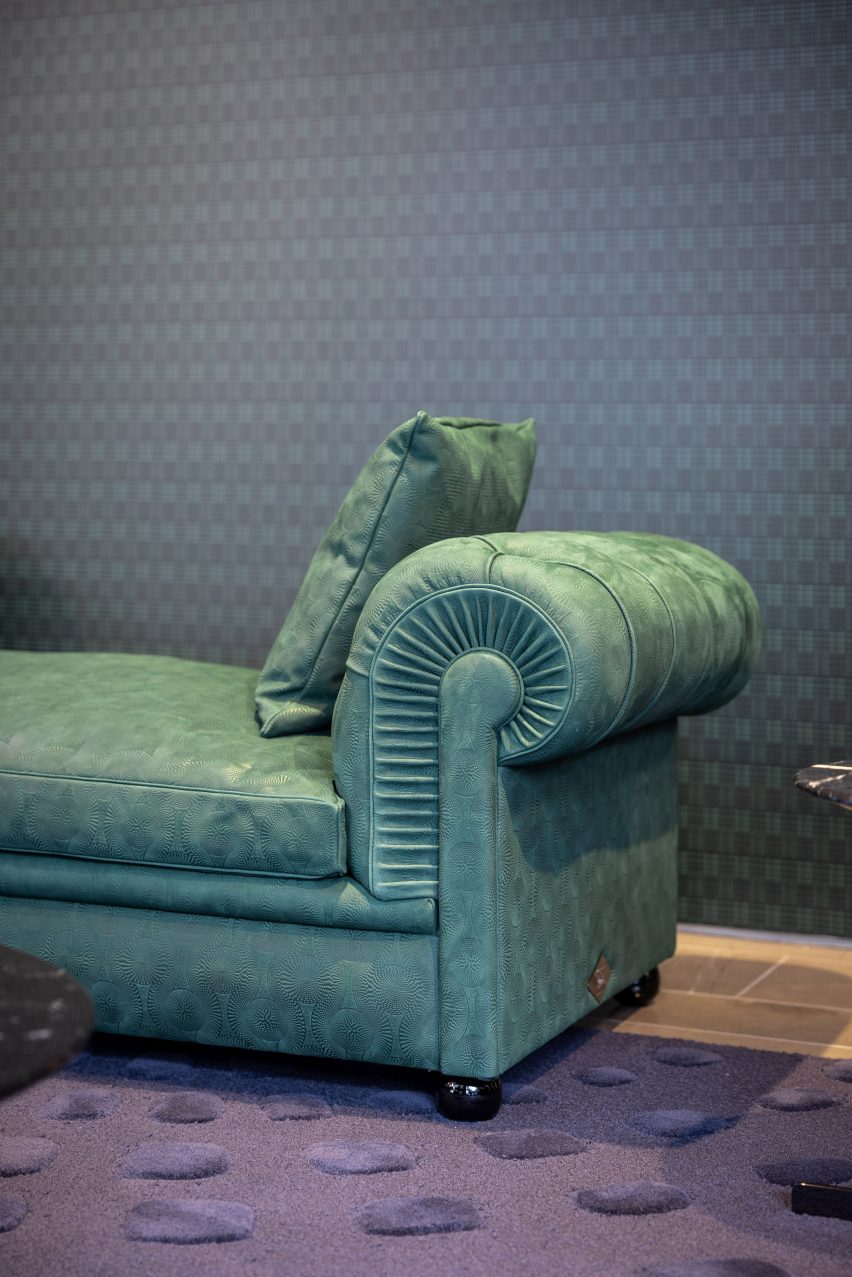
Boateng's version of Chester is a clear expression of his multicultural heritage.
The embossed pattern that features on the design is Tribal, one of the designer's signature textile designs, which is based on prints from traditional West African cloth.
The collection also includes a rework of one of Poltrona Frau's landmark designs, the 1930 Vanity Fair armchair, which sees the Tribal pattern digitally printed onto matt-effect velvet.
Boateng described the collection as "a layered proposition, because of what it represents".
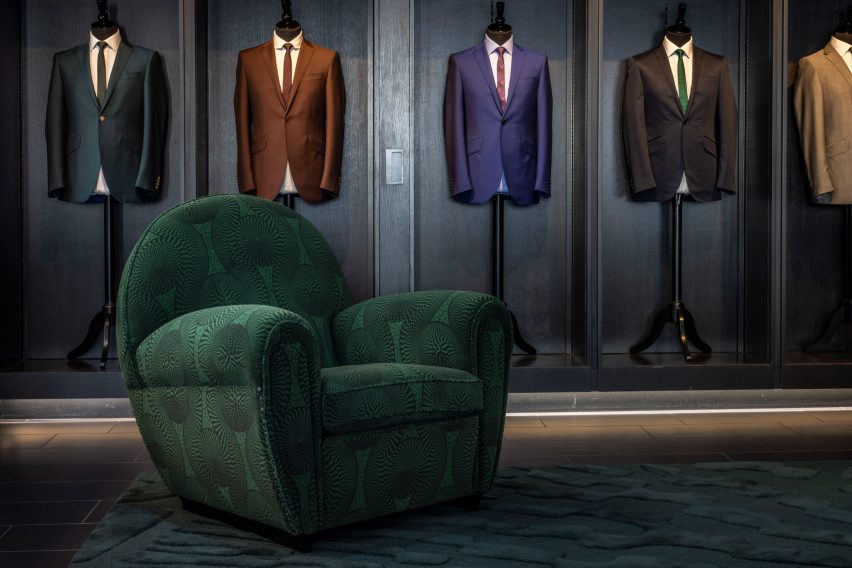
However, the designer said that he is more motivated by the quality of the end product than what it stands for.
"I have been navigating perception my whole life," he said.
"I knew that if I could be on Savile Row, respecting the traditions but finding interesting ways to evolve them, it would be accepted and would open doors in terms of perception. It's the same with Poltrona Frau."
Ozwald Boateng x Poltrona Frau was on show from 16 to 24 September as part of London Design Festival. See Dezeen Events Guide for more architecture and design events around the world.
Dezeen In Depth
If you enjoy reading Dezeen's interviews, opinions and features, subscribe to Dezeen In Depth. Sent on the last Friday of each month, this newsletter provides a single place to read about the design and architecture stories behind the headlines.